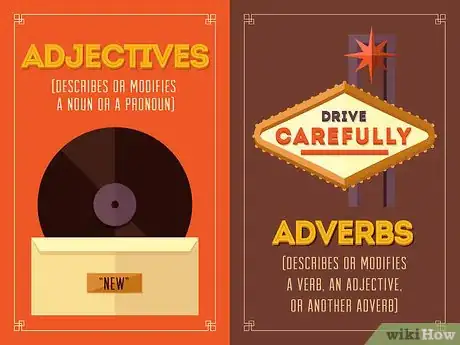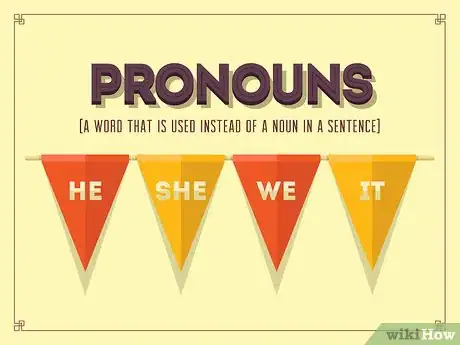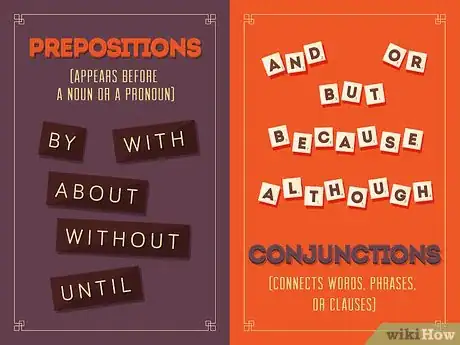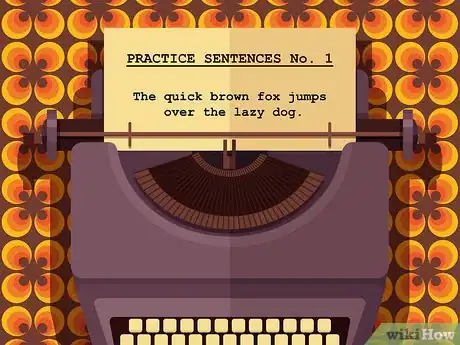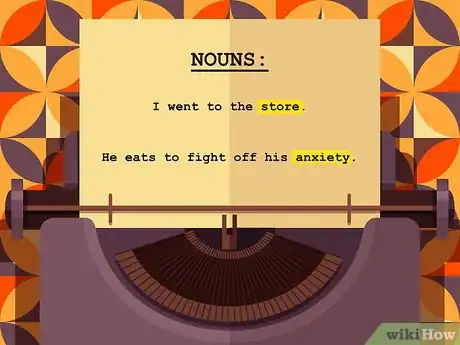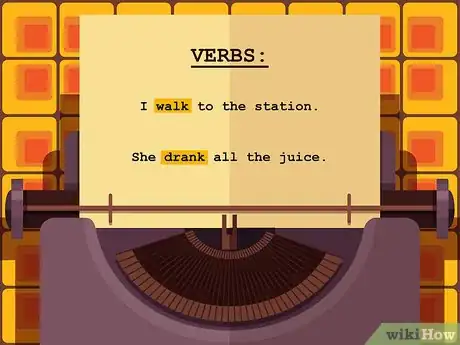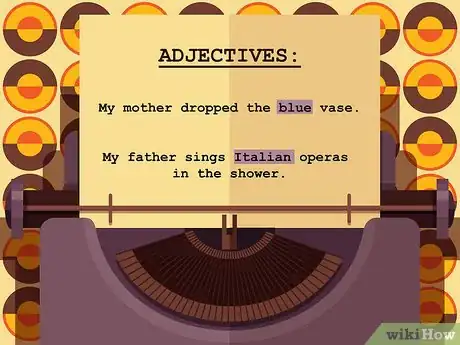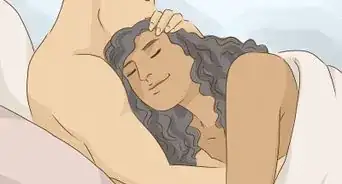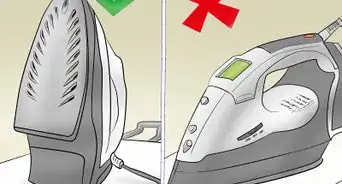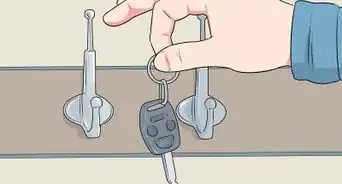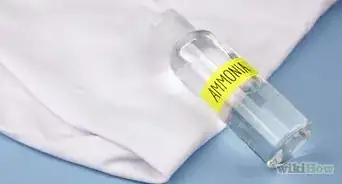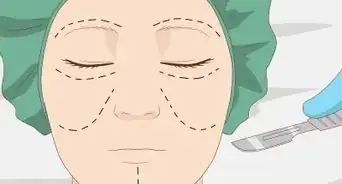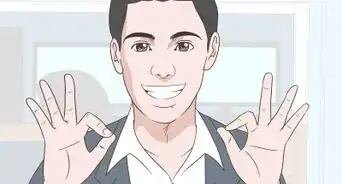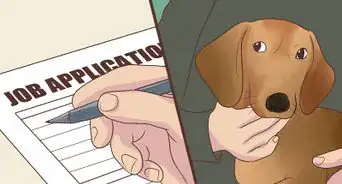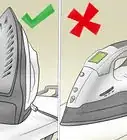This article was co-authored by Stephanie Wong Ken, MFA. Stephanie Wong Ken is a writer based in Canada. Stephanie's writing has appeared in Joyland, Catapult, Pithead Chapel, Cosmonaut's Avenue, and other publications. She holds an MFA in Fiction and Creative Writing from Portland State University.
This article has been viewed 92,940 times.
You are likely facing a school homework assignment where you have to find the parts of speech in a text. Learning how to identify the parts of speech in a sentence will help you better understand how the English language works. Doing parts of speech exercises will give you a stronger grasp on proper grammar, a more developed vocabulary, and the skills needed to compose a correct sentence.
Steps
Understanding the Parts of Speech
-
1Identify the two basic parts of speech in a sentence. There are two basic parts of speech that will appear in a sentence: a noun and a verb.[1]
- A noun is the name of a person, place, thing, or idea. For example: “woman”, “Montana”, “pen”, “sadness”. A noun often appears after an article, such as “the”, “a”, or “an”, in a sentence. Nouns can also be singular or plural and can function differently within one sentence.
- For example: “The young man gave me a rare gift from Montana and then calmly told me he valued happiness above all else.” In this sentence, the nouns are: “man”, “gift” “Montana”, and “happiness”.
- A verb expresses an action, or “to be”. For example: “run”, “swim”, “jump”, “sit”, “think”. In one sentence, there is a main verb and sometimes one or more verbs that help in the sentence. The verb in the sentence must agree with its subject, so if the subject is singular, the verb must be singular, and if the subject is plural, the verb must be plural. Verbs can also appear in different tenses (past, present, future).
- For example: “The young man gave me a rare gift from Montana and then calmly told me he valued happiness above all else.” In this sentence, the verbs are: “gave” “told” and “valued”.
-
2Learn about adjectives and adverbs in a sentence. Once you understand the two basic parts of speech, expand your knowledge to more complex parts of speech: adjectives and adverbs.[2]
- An adjective describes or modifies a noun or a pronoun. For example: “cute”, “new”, “red”, “strong”. An adjective will answer the questions: which one, what kind, or how many. Keep in mind articles, such as “a”, “an”, “the”, are classified as adjectives.
- For example: “The young man gave me a rare gift from Montana and then calmly told me he valued happiness above all else.” In this sentence, the adjectives are: “young” and “rare”.
- An adverb describes or modifies a verb, an adjective, or another adverb. However, adverbs never modify a noun. Adverbs usually end in “ly”. For example: “calmly”, “deeply”, “carefully”, “clearly”.
- In the example sentence: “The young man gave me a rare gift from Montana and then calmly told me he valued happiness above all else,” the adverb is: “calmly”.
-
3Identify the role of the pronoun in a sentence. A pronoun is a word that is used instead of a noun in a sentence.[3] For example: “she”, “her”, “we”, “they”, “it”.
- In the example sentence: “The young man gave me a rare gift from Montana and then calmly told me he valued happiness above all else,” the pronouns are “me” and “he”. “He” replaces “man” in the sentence.
-
4Understand the role of the preposition and the conjunction in a sentence. The preposition and the conjunction in a sentence are the smaller terms that frame the main parts of the sentence (the noun, the verb, and the adjective).[4]
- A preposition appears before a noun or a pronoun. It will modify the noun or the pronoun in a sentence. For example: “by”, “with”, “without”, “about”, “until”, “from”.
- In the example sentence: “The young man gave me a rare gift from Montana and then calmly told me he valued happiness above all else,” the preposition in the sentence is “from”.
- A conjunction connects words, phrases, or clauses. It also tells the reader about the relationship between two words, phrases, or clauses. For example: “and”, “but”, “or”, “because”, “although”.
- In the example sentence: “The young man gave me a rare gift from Montana and then calmly told me he valued happiness above all else,” the conjunction is “then”.
Identifying the Parts of Speech in a Text
-
1Use practice sentences. Test your knowledge of the parts of speech in a text by practicing with example sentences. Type the sentence on your computer or write it down. Then, use highlighters, colored pens, or the highlight tool on your computer to identify each part of speech.
- There are several example sentences you can access online, and practice parts of speech test sheets that you can use to test your knowledge. You can try using simple sentences to identify basic parts of speech, like the noun or the verb, and longer, more complex sentences to identify more complex parts of speech, like the adverb or the preposition.[5]
-
2Identify the noun in the sentence. Choose a highlighter color for nouns and try to locate it the noun in a simple sentence, such as: “I went to the store.” In this sentence, the noun is the object, “store”. “He eats to fight off his anxiety.” In this sentence, the noun is the feeling, “anxiety”.
- After you feel comfortable with locating the noun in a simple sentence, try a more complex sentence: “The little girl suddenly dropped her new doll and raced by me to the store.”
- Use your highlighter to find all the nouns in this sentence: “girl”, “doll”, “store”.
-
3Find the verb in the sentence. Choose another highlighter color for verbs and find the verb in a simple sentence, such as: “I walk to the station.” In this sentence, the verb is the action word, “walk”. “She drank all the juice.” In this sentence, the verb is the action word, “drank”.
- Try to find the verbs in a more complex, and much longer sentence: “The little girl suddenly dropped her new doll and raced by me to the store.”
- Use your highlighter to find all the verbs in this sentence: “dropped”, “raced”.
-
4Locate the adjective in the sentence. Pick another highlighter color for adjectives and highlight the adjectives in a simple sentence, such as: “My mother dropped the blue vase.” In this sentence, the adjective is the descriptor “blue”. “My father sings Italian operas in the shower”. In this sentence, the adjective is the descriptor “Italian”.
- Look for the adjectives in a more complex, and much longer sentence: “The little girl suddenly dropped her new doll and raced by me to the store.”
- Use your highlighter to find all the adjectives in this sentence: “little”, “new”.
-
5Note any adverbs and pronouns in the sentence. Choose a highlighter color for adverbs and find the adverbs in a short, simple sentence, such as: “I spoke to him calmly.” In this sentence, the adverb, “calmly” is the modifying the verb “spoke”.
- Identify the adverbs in a longer sentence: “The little girl suddenly dropped her new doll and raced by me to the store.”
- Highlight the adverb in this sentence, “suddenly”.
- Pick another highlighter color for pronouns and identify the pronouns in a simple sentence: “I picked him up at noon.” In this sentence, the pronoun is “him”.
- Locate the pronouns in a longer sentence: “The little girl suddenly dropped her new doll and raced by me to the store.”
- Highlight the pronouns in the this sentence: “her” and “me”.
-
6Identify the prepositions and conjunctions in the sentence. Practice identifying prepositions in a simple sentence: “I went with her to the store.” In this sentence, the preposition is “with”.
- Practice finding the prepositions in a more complex sentence: “The little girl suddenly dropped her new doll and raced by me to the store.” The preposition in this sentence is “by” as it modifies “to the store”.
- Try to find the conjunctions in a simple sentence: “We ate pizza and ice cream”. The conjunction in this sentence is “and” as it connects two nouns together, “pizza” and “ice cream”.
- Try to identify the conjunction in a more complex sentence: “I didn't want to go to the show that night because I knew she would be there.” In this sentence, the conjunction is “because” as it connects the first half of the sentence to the second half of the sentence.
-
7Practice with other example sentences and questions. Once you have ran through several example sentences, simple and complex, use your highlighter colors to identify the parts of speech in one sentence or question.
- For example: “Why did you go to the late show without me?” Use your highlighter colors to find the noun, the verb, the adjective, the pronouns, and the preposition in this sentence.
- You may want to try highlighting the parts of speech of practice sentences and questions with a partner so you can quiz each other on the parts of speech.
Community Q&A
-
QuestionHow do I identify parts of speech when the sentence is, "I could NEVER do that hard work at my age"?
 DonaganTop AnswererWork and age are nouns. I is a pronoun. Could is an auxiliary (helping) verb. Never is an adverb. Do is a verb. That, hard and my are adjectives. At is a preposition.
DonaganTop AnswererWork and age are nouns. I is a pronoun. Could is an auxiliary (helping) verb. Never is an adverb. Do is a verb. That, hard and my are adjectives. At is a preposition. -
QuestionIn the sentence: "Give them too much water", are "too" and "much" both adverbs?
 Community Answer"Much" is an adjective modifying "water." "Too" is an adverb modifying "much."
Community Answer"Much" is an adjective modifying "water." "Too" is an adverb modifying "much." -
QuestionWhat part of speech is "bit"?
 DonaganTop Answerer"Bit" can be a verb ("the dog bit my hand") or a noun ("I ate every bit of the food").
DonaganTop Answerer"Bit" can be a verb ("the dog bit my hand") or a noun ("I ate every bit of the food").
References
- ↑ https://www.butte.edu/departments/cas/tipsheets/grammar/parts_of_speech.html
- ↑ https://www.butte.edu/departments/cas/tipsheets/grammar/parts_of_speech.html
- ↑ https://www.englishclub.com/grammar/parts-of-speech.htm
- ↑ https://examples.yourdictionary.com/part-of-speech-examples.html
- ↑ http://www.englishgrammar.org/parts-speech-exercise-4/
About this article
Identifying the different parts of speech is important for understanding text. A noun is the name of a person, thing, or idea, like “woman,” “pen,” and “sadness.” A verb is an action, like “run,” “jump,” “think,” and “be.” Adjectives, like “red,” “happy,” and “short” describe nouns, while adverbs like “quickly,” “gently,” and “calmly” describe verbs. To find these parts in a text, start with short, simple sentences. Try highlighting the different parts in different colors so you can easily see the nouns, verbs, adjectives, and adverbs. For example, in the sentence “The man walked quickly out of the store,” “man” and “store” are nouns, “walk” is a verb, and “quickly” is an adverb. Once you understand these, look for conjunctions, which are words like “and” and “however” that link sentences together. For more tips from our Writing co-author, including how to learn pronouns and prepositions, read on!

